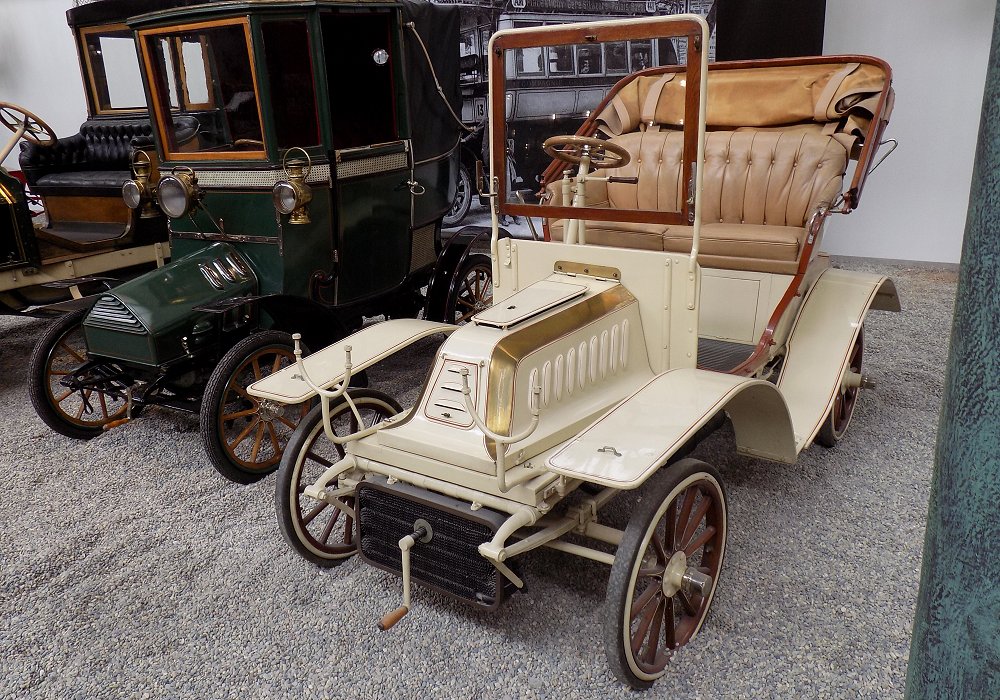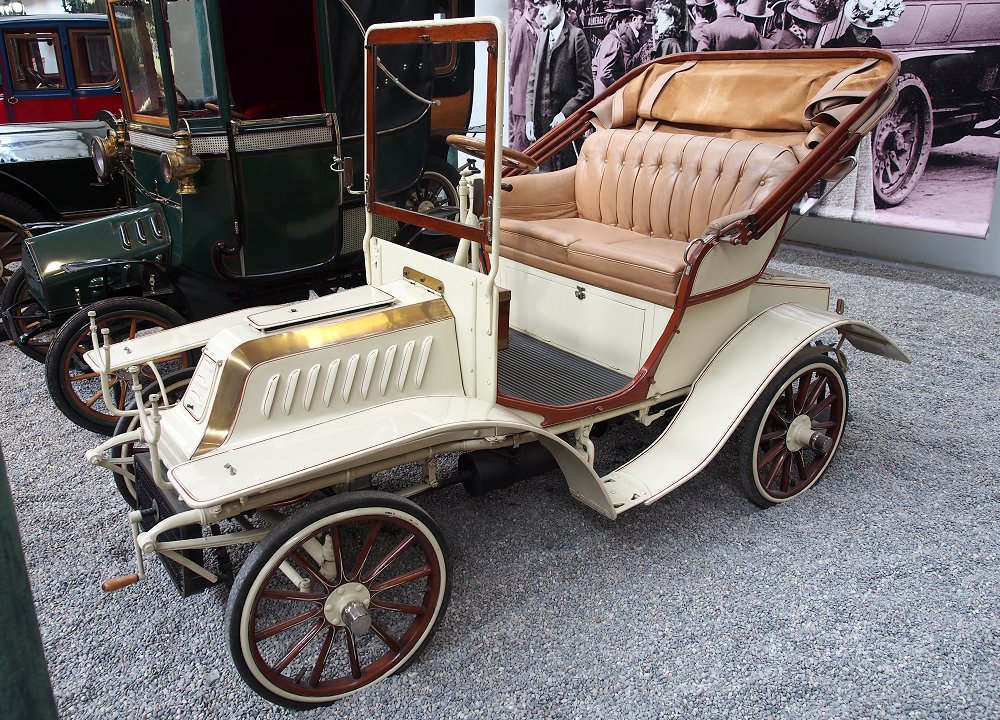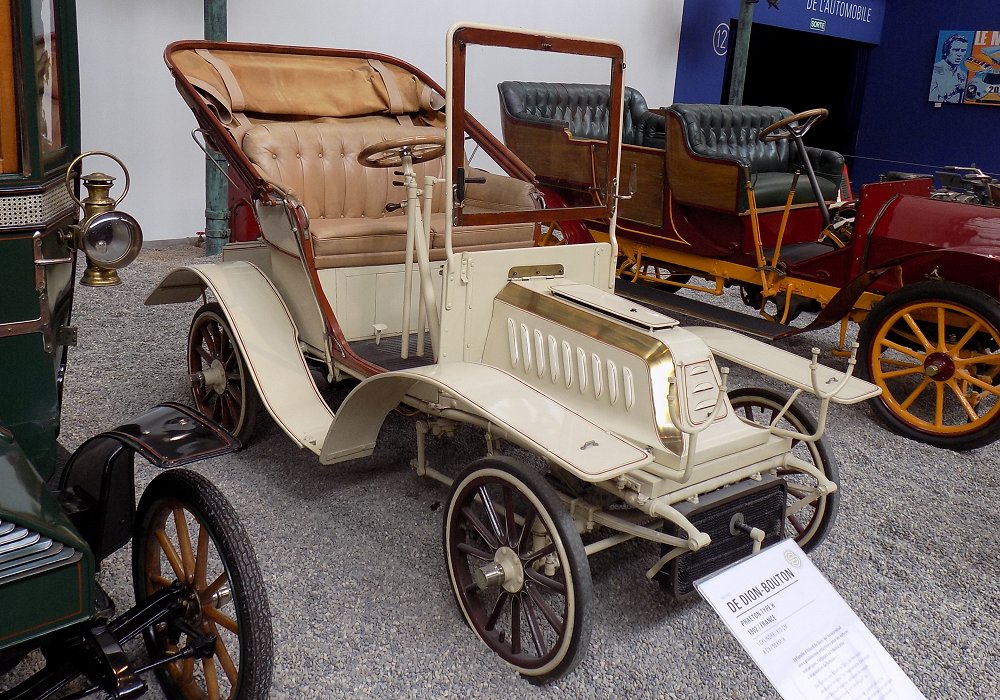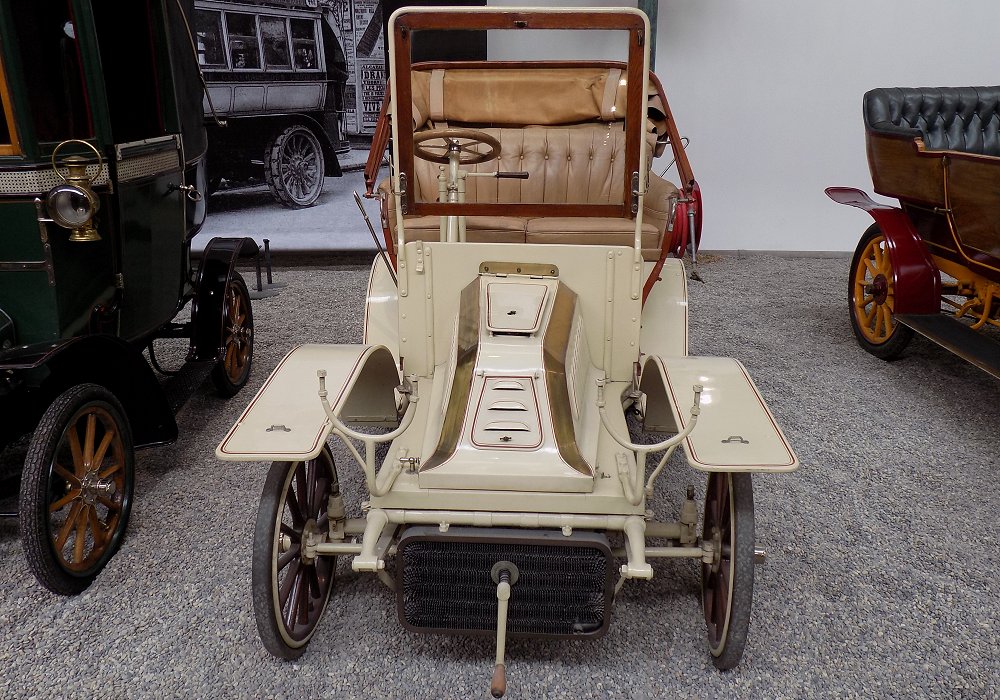Description
The De Dion-Bouton Type H Phaeton was a notable example of early 20th-century French automotive engineering, produced in the first decade of the 1900s during a time of rapid innovation and transition from steam to internal combustion vehicles. De Dion-Bouton, a pioneering company in the development of motor vehicles, had established itself as a major player in the industry, and the Type H was one of several models that reflected their commitment to combining performance, reliability, and refined design.
The Type H Phaeton was powered by a single-cylinder petrol engine, typical of De Dion-Bouton’s designs at the time, which emphasized simplicity and mechanical reliability. The engine was mounted at the rear of the vehicle, driving the rear wheels via a chain or shaft drive system depending on the production year. The engine featured advanced engineering for its day, including mechanically operated valves and a well-designed ignition system that contributed to smooth and consistent running.
The car featured a lightweight chassis, and its open phaeton body style was both elegant and practical. The phaeton design meant it was an open-top car with minimal weather protection, a popular style in the Edwardian period, especially for touring and leisure driving. The vehicle could accommodate two to four passengers, depending on the specific bodywork and seating arrangement, and the seating was often upholstered in fine leather, with brass fittings and wooden accents providing an air of luxury.
Ride comfort was improved through the use of semi-elliptical leaf springs and relatively large wheels, which helped it navigate the rough and often unpaved roads of the era. Steering was precise for the time, and braking was accomplished via drum brakes or transmission brakes, operated by hand or foot levers.
The De Dion-Bouton Type H Phaeton was representative of a time when automobiles were shifting from experimental novelties to practical modes of transport. It embodied the craftsmanship and engineering excellence that De Dion-Bouton was known for, making it a favorite among early adopters of motoring technology. Though modest in performance by modern standards, the Type H offered an enjoyable and refined driving experience for its time and remains an important piece of automotive history.



